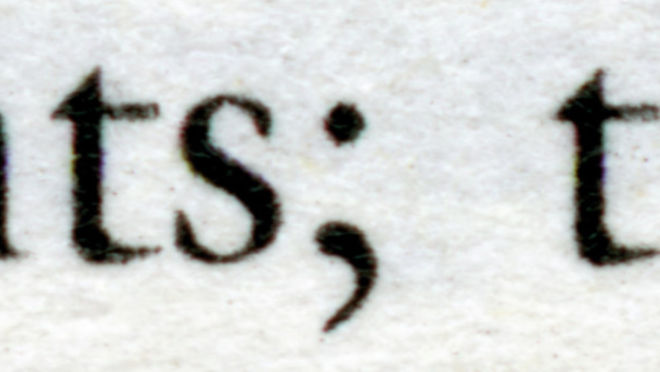Semicolon use declines sharply in English writing, study finds
Semicolon use declines sharply in English writing, study finds

Kurt Vonnegut once advised writers to abandon the semicolon altogether, “Do not use semicolons,” dismissing it as a pretentious flourish that merely “shows you’ve been to college.” Now, it appears British writers may be heeding that advice.
A recent study commissioned by Babbel, a language learning platform, finds that semicolon use in English-language books has nearly halved over the past two decades — from one in every 205 words in 2000 to just one in every 390 words today, reports The Guardian.
The findings indicate that this historically divisive punctuation mark, first introduced by Italian scholar Aldus Pius Manutius in 1494, may be slipping into obsolescence. Once embraced by the likes of Charles Dickens, Jane Austen and Mark Twain, the semicolon is now increasingly absent from contemporary literature — and classrooms.
Grammar expert Lisa McLendon, author of The Perfect English Grammar Workbook, conducted further research on the matter. Among British university students surveyed, 67% said they never or rarely use semicolons. Only 11% reported using them frequently.
To assess broader knowledge levels, McLendon devised a 10-question quiz for London’s Student Network, which counts over half a million members. More than half of the respondents reportedly failed to demonstrate an understanding of when or how to use a semicolon correctly.
According to the Oxford Dictionary of English, a semicolon marks a pause “typically between two main clauses, that is more pronounced than that indicated by a comma.” It is often used to link related independent clauses or to clarify lists where multiple commas might create confusion.
Despite these uses, the semicolon remains one of the most contested tools in a writer’s kit. Bestselling author Lynne Truss, in Eats, Shoots & Leaves, warned that semicolons can be “dangerously habit-forming,” suggesting their misuse can lead to stylistic excess.
Authors such as RL Stine and Cormac McCarthy appear to agree. Stine’s Goosebumps series reportedly features just one semicolon every 200,000 words. McCarthy, having used 42 semicolons in his debut The Orchard Keeper, almost entirely abandoned the mark in his subsequent novels.
Even mainstream fiction has not been immune: EL James was criticised for relying on commas where semicolons would have been grammatically correct throughout her Fifty Shades trilogy.
Yet, the punctuation mark retains its loyalists. Virginia Woolf famously deployed more than 1,000 semicolons in Mrs Dalloway to mirror the character’s stream of consciousness. Salman Rushdie, John Updike and Donna Tartt each average over 300 semicolons per 100,000 words.
Even Abraham Lincoln once reportedly praised it as “a very useful little chap.”
Historically, semicolon usage has seen dramatic shifts. According to Google Books Ngram Viewer, usage in English literature rose by 388% between 1800 and 2006 before dropping by 45% in the following 11 years. However, from 2017 onwards, semicolon usage began to rise again — up 27% by 2022.
Whether this marks a resurgence or merely a momentary reprieve remains to be seen. As author Hilary Mantel imagined in A Place of Greater Safety, French revolutionary Camille Desmoulins may have said it best: “There’s nothing in this breathing world so gratifying as an artfully placed semicolon.”


